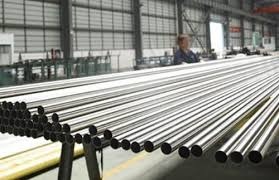Best Practices for Handling and Storing Helium Tanks
Industrial gases like nitrogen gas, helium, and argon gas, play a vital role in various industries, from manufacturing to science and technology. Among these, helium, in particular, due to its unique properties, requires careful handling and storage to maintain safety and minimise losses. This article outlines best practices for managing and storing helium tanks in industrial settings effectively.
Understanding Helium and its Industrial Applications
Helium is a non-toxic, non-flammable, inert gas that is used across different fields, such as in medical equipment like MRI machines, in welding as a protective atmosphere, and in laboratories for scientific research. The irreplaceable nature of helium makes understanding its proper handling and storage of paramount importance.
Regular Inspection of Helium Tanks
Storage begins with the regular inspection of helium tanks. These inspections should be thorough, covering the condition of cylinders, valves, and safety relief devices. Any indication of damage or wear, such as rust, dents, or valve malfunctions, must be addressed immediately to prevent leaks or bursts.
Ensuring Proper Storage Conditions
A key element of best practices for a helium tank includes maintaining the right environment for storage. The area should be dry, well-ventilated, and clean, free from dust and contaminants that could interfere with the integrity of the cylinders. Furthermore, protecting the tanks from the elements, particularly direct sunlight and extreme temperatures, is crucial to prevent pressure changes that can compromise safety.
Implementing Safety Measures
Safety measures for storing helium tanks should never be overlooked. This means equipping storage areas with proper fire suppression systems and clearly marking the storage location with appropriate hazard signs. Workers must also be provided with personal protective equipment (PPE) necessary when handling or moving cylinders.
Securing Tanks to Prevent Accidents
Helium tanks must be securely fastened to prevent them from falling over, which could cause injuries or damages. The use of chains or adequate restraints is common practice, and ensuring that the tanks are stored upright is universally recommended. The security of the tanks becomes even more critical during transportation.
Controlled Access to Helium Storage Areas
Controlled access to where helium cylinders are stored is crucial. Only trained and authorised personnel should be permitted to handle or move helium tanks to minimise the potential for accidents. This includes rigorous training for staff on safe handling procedures and emergency response protocols.
Education and Training for Staff
Regular training and education of staff is a cornerstone of best practices in industrial gas storage. This encompasses proper lifting techniques, understanding the properties of helium, and the ability to operate safety equipment. Moreover, staff should be well-versed in identifying and reporting potential hazards or non-compliance issues immediately.
Maintenance of Helium Tanks
Maintenance plays a vital role in the lifespan of helium tanks. Regular servicing, including pressure tests and valve maintenance, should be scheduled according to manufacturer guidelines and national safety regulations. Keeping a detailed maintenance log can help track the condition and servicing schedule of each cylinder.
Proper Usage and Handling Equipment
The use of specialised equipment for moving and using helium tanks is important. Trolleys, hoists, and lifters designed for gas cylinders ensure safe transport within facilities. When it comes to usage, employing the correct regulators, gauges, and fittings meant for helium helps prevent accidental releases and maintains operational safety.
Contingency Planning
Despite all best practices, unexpected events can occur, making a comprehensive contingency plan indispensable. This should outline steps to be taken in case of a leak, fire, or other emergencies involving helium tanks. Drills and simulations should be conducted regularly to ensure readiness.
Leak Detection and Repair
Detecting leaks early is vital to reduce helium loss and maintain safety standards. Using leak detection equipment and regularly inspecting the tanks and their connections for signs of leakage is recommended. If a leak is detected, repairing it swiftly and safely is paramount.
Environmental Considerations
In addition to safety concerns, environmental considerations are also important when storing helium. As a finite resource, the responsible usage and storage of helium to prevent wastage align with sustainable practices. Recycling and recovery programmes are additionally encouraged where feasible.
Understanding Regulations and Compliance
Regulations governing the storage and handling of helium and other industrial gases vary by country and region. It is essential that organisations familiarise themselves with these regulations to ensure compliance. This includes proper labelling, storage limits, and adherence to international standards.
Conclusion
Helium, an invaluable resource in numerous industries, demands careful attention from companies that use and store it. The best practices outlined in this article—ranging from regular inspections, safety measures, controlled access, staff training, maintenance, and proper equipment use, to contingency planning, environmental considerations, and compliance—are all designed to foster a safe and efficient working environment. Applying these guidelines will ensure that your helium resources are managed effectively and responsibly, contributing to operational success and workplace safety.
By following these best practices, organisations can ensure the safe and efficient use of helium tanks, thereby promoting a culture of safety and responsibility that underpins all successful industrial gas applications.

